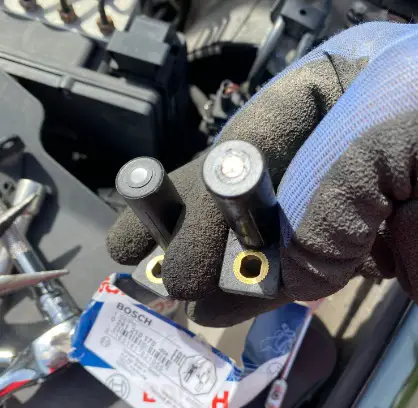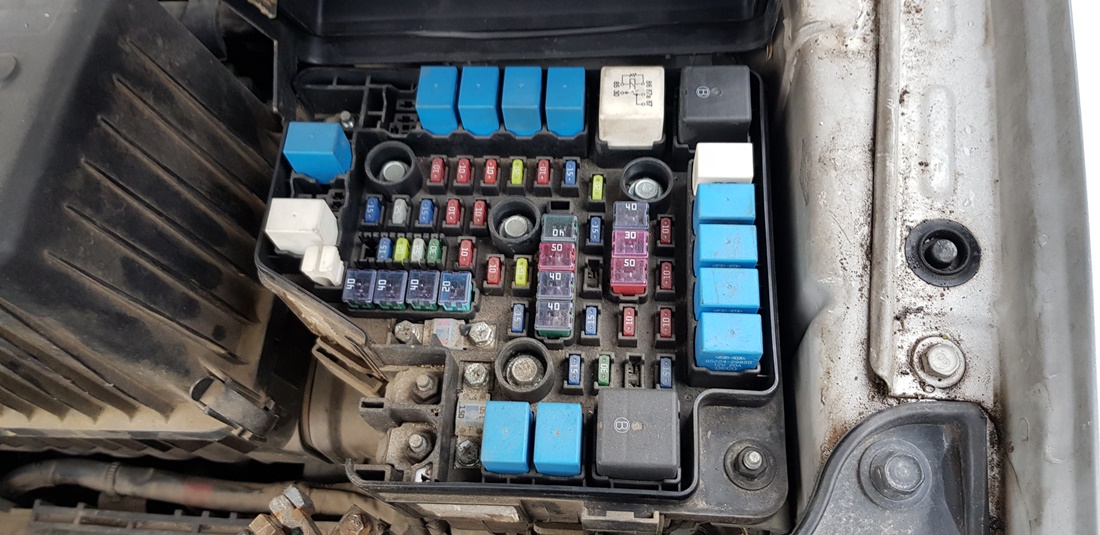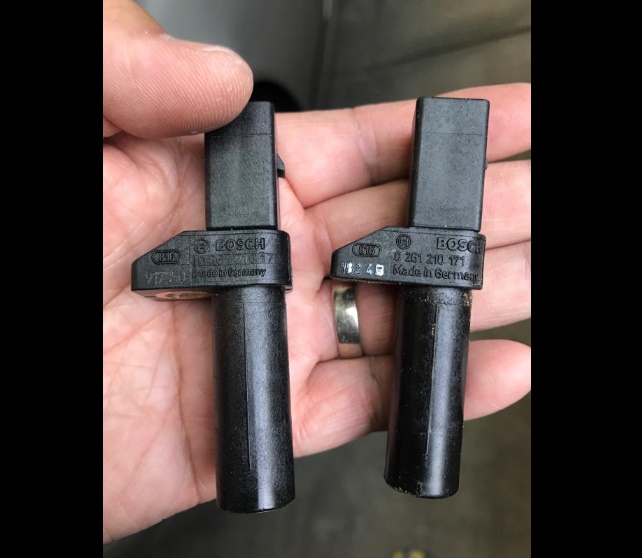In the wintertime, cities often use salt to help melt ice and snow on roads. Unfortunately, this same salt can also do significant damage to a car’s undercarriage.
Over time, salt corrodes metal parts leading to rust or other issues; additionally, salt damages rubber and plastic components as well. So how can you protect your undercarriage from salt damage?
In this article, I’ll provide you with an easy method for protecting the undercarriage of your car from salt damage. Doing so can keep it looking pristine for many years to come! Read on to discover more about the process.
- Key Takeaway
- What is The Undercarriage of a Car?
- How To Protect The Undercarriage From Salt
- Why Is It Important To Protect The Undercarriage of a Car From Salt?
- Common Signs of Undercarriage Damage Caused By Salt
- FAQs
- Q: How does salt damage the undercarriage of a car?
- Q: Can I use any type of coating or spray to protect the undercarriage of my car?
- Q: How often should I wash the undercarriage of my car to protect it from salt?
- Q: Are there any specific precautions to take when driving in salted areas?
- Q: Can I protect the undercarriage of my car myself or do I need professional help?
- Q: What are the consequences of not protecting the undercarriage of my car from salt?
- Conclusion and final thoughts
Key Takeaway
- To protect the undercarriage from salt you will need to park the vehicle, lift it using a jack and jack stands, remove all four wheels, wash the undercarriage, let it dry, sand down the metal parts, and apply an undercoating spray.
- The undercarriage of a car, also known as the chassis, is the structural framework beneath the vehicle that supports its body and includes integral components like the suspension system, exhaust system, transmission, and axles.
- It’s important to protect the undercarriage of a car from salt because it can accelerate corrosion, leading to damage of critical components like the braking and exhaust systems, potentially causing costly repairs and unsafe driving conditions.
What is The Undercarriage of a Car?
The undercarriage of a car, also known as the chassis, is the framework beneath the vehicle that supports its body and includes components like the suspension system, exhaust system, transmission, and axles.
In more detail, the undercarriage is essentially the backbone of a car. It provides structural strength and stability and houses many of the critical systems that make your vehicle run.
Starting from the front, you’d find parts such as the engine and transmission, which are typically the heaviest components and are therefore located low in the car for balance.
Moving back, you’d encounter the exhaust system, which carries waste gases away from the engine.
Also part of the undercarriage are the axles, which hold the wheels, and the suspension system, which absorbs shocks and bumps from the road to ensure a smooth ride.
How To Protect The Undercarriage From Salt

Protecting the undercarriage from salt requires applying a protective layer. Coating metal and plastic parts beneath your vehicle with salt-repellant paint helps ensure they never come in contact with salt, protecting them from corrosion. Here is how to shield your undercarriage:
Note: Even if your city does not use salt on its roads, you still need to do this. Your vehicle could still be exposed to saltwater (close to an ocean or sea), and over time the salt will seep into metal parts of your car and cause them to rust.
1. Required materials
- Wire brush or sandpaper
- Professional grade undercoating spray (see prices on amazon.com)
- Protective gear (face mask, goggles, gloves)
- Car jack and jack stands
- Lug wrench
2. Park the car on a leveled ground
This task could take up to five hours of work, so you should plan ahead. Start by parking the vehicle on level ground; otherwise, you will have to lift both front and rear ends in order to gain access underneath it.
Additionally, you should factor in the time needed for each task. If you plan on finishing in one day, determine when and where your work can be accomplished.
Starting early in the morning allows for optimal lighting conditions; however, if starting later in the day, ensure your car is parked inside a garage or has access to some form of backup power source.
But regardless, park the vehicle on level ground and ensure the parking brake is engaged.
3. Jack the front and the back end of the vehicle

Protecting the undercarriage of a vehicle from salt requires various tasks like washing it, sanding it, and applying the coating.
To do this safely, lift both front and back ends using a jack; follow the jacking points in your owner’s manual for specific instructions on lifting. Lift the car high enough that you can easily get underneath it to work on it safely.
4. Remove the wheels

Removing the wheels may seem like an extra step that needs more work, but do it anyway – it will make accessing and coating an important area of your car much easier.
As snow accumulates on it during driving, salt and ice buildup accumulate on it – the fender. This area is notorious for rust damage due to tire throwback snow accumulation.
To take the wheels off a car, you will need a lug wrench to loosen the lug nuts. Since your vehicle has already been lifted, use this to loosen all of the lug nuts and store them separately.
With your handheld in place, gently tug on each wheel in turn; be gentle as this may take some effort since your car is on jack stands and any force could cause it to come loose from its supports.
When pulling out wheels with this method, be sure not to overextend yourself since this step requires using caution; don’t over-exert too much force as your car could fall off its stands while being lifted off!
5. Wash the undercarriage

The ideal way to clean a car’s undercarriage is with a pressure washer. Be sure to lower the setting on your washer before beginning, as high pressure can damage sensitive components.
Next, direct the nozzle upward and move it back and forth across the underside of the car starting from the front and working your way backward. Pay special attention to any areas that appear particularly dirty or likely to corrode.
However, if you don’t have access to a pressure washer, a garden hose can work just as well. But since all sorts of stuff get under the vehicle, you might also need an additional brush for stubborn grime removal.
When using the brush, soak it in some soapy water first but make sure that afterward, you rinse thoroughly – we don’t want soap interfering with the undercoating!
6. Sand down the metal parts

Sanding the undercarriage of your vehicle before applying an undercoat is essential. By sanding down metal parts, you are effectively eliminating any rust and remaining grime that might interfere with adhesion between layers and provide better protection for the metal surface. This will make applying the undercoat much easier on metal surfaces as well.
Sanding down the undercarriage of a car is not an especially challenging task. To begin, gather all necessary supplies: sandpaper in various grits, a dust mask, eye protection, and a power sander. If you don’t own one yet, hand sanding with either sandpaper or a wire brush works just as well.
Next, begin with coarse-grit sandpaper and work your way up to finer grit. Be patient as you go along, taking care not to damage the metal. Once you’re finished sanding, be sure to clear away all dust residue.
7. Apply the undercoating spray

At this point, your undercarriage should have been washed, dried, and sanded. Now it’s time to apply the undercoating spray. Grab the can and shake vigorously before use; you can start from anywhere; personally, I like starting behind the wheel so I can do all four wheels first then move underneath the vehicle.
Make sure all metal parts get coated; don’t worry if some spray gets on plastic parts such as shocks or studs – this stuff is non-abrasive so won’t damage them.

One common misstep people make during this step is not having enough undercoating sprays. If this is your first time doing it, you might not know how many you need so it’s best to purchase a pack of six. Additionally, remember to have extra undercoating spray on hand for future projects.
8. Keep the coatings from being rubbed off

We all know that while driving, many things can get under the car and chip the undercoating. Without an undercoating layer, metal is left vulnerable to salt damage and thus needs frequent inspection. That is why it’s so important to get under your vehicle periodically and inspect its condition.
Your undercarriage will remain protected from salt damage as long as you keep the coatings from becoming rubbed off or cracked. If in case of a wreck and don’t reseal the coating afterward, your car won’t be shielded against salt buildup says Pedal Commander.
See also: 7 Ways To Protect Your Car From Snow And Salt
Why Is It Important To Protect The Undercarriage of a Car From Salt?
Protecting the undercarriage of a car from salt is important because salt accelerates the corrosion process, which can lead to significant damage over time.
Salt is frequently used on roads during winter to melt ice and improve driving conditions. However, this salt can stick to your car’s undercarriage and cause rust and corrosion if not properly cleaned off.
The undercarriage is particularly vulnerable because it houses many critical components including the exhaust, braking, and suspension systems.
Corrosion caused by salt can weaken these parts, potentially leading to costly repairs or even dangerous situations if key components fail while you’re driving.
For instance, rust can eat away at brake lines, causing them to leak and impairing your car’s stopping power. Similarly, corrosion in the exhaust system can lead to harmful gases leaking into your vehicle.
As a mechanic, I’ve seen cars come into the shop with extensive damage caused by salt corrosion. It’s always disheartening because this type of damage is largely preventable.
Regularly washing your car, especially the undercarriage, during the winter months can go a long way in preventing salt-induced corrosion. It’s an easy step that can save you a lot of trouble down the line.
Common Signs of Undercarriage Damage Caused By Salt
Common signs of undercarriage damage caused by salt include visible corrosion, steering issues, leaking fluids, and accelerated wear on body panels.
Visible Corrosion
One of the most obvious signs of undercarriage damage caused by salt is visible rust or corrosion. Salt accelerates the rusting process, especially on metal parts. Over time, you may notice patches of rust on the undercarriage or even holes caused by severe corrosion.
Steering Issues
Salt-related corrosion can also affect your car’s steering system. If the components of the suspension system that are located in the undercarriage start to rust, you might experience issues such as delayed turning or an overall decrease in steering responsiveness.
Leaking Fluids
Another common sign of undercarriage damage is leaking fluids. If the salt has caused corrosion on parts like the engine oil pan or the transmission casing, you might notice puddles of oil or transmission fluid under your car. This can lead to more serious mechanical problems if not addressed promptly.
Accelerated Wear on Body Panels
Finally, salt can accelerate wear on body panels. It acts like a media blaster, pitting the paint and underlying metal, which can lead to quicker rust development. This is often most noticeable on the lower parts of the car’s body, which are closest to the road and therefore more likely to come into contact with salt.
FAQs
Q: How does salt damage the undercarriage of a car?
A: Salt can damage the undercarriage of a car by causing corrosion. Salt reacts with moisture and forms a corrosive substance that eats away at the metal components. Over time, this can weaken the structural integrity of the undercarriage and lead to costly repairs or even safety risks.
Q: Can I use any type of coating or spray to protect the undercarriage of my car?
A: It is recommended to use a product specifically designed for undercarriage protection. These products are formulated to withstand the harsh conditions and offer long-lasting protection against salt and other corrosive elements. Consult the manufacturer’s instructions or seek professional advice for the best product to use.
Q: How often should I wash the undercarriage of my car to protect it from salt?
A: It is recommended to wash the undercarriage of the car after driving on salted roads or at least once a month during the winter season when salt is commonly used on the roads. However, if you notice any signs of salt buildup or damage, it is advisable to wash the undercarriage more frequently.
Q: Are there any specific precautions to take when driving in salted areas?
A: When driving in salted areas, it is advisable to avoid puddles or standing water on the road as they might contain a high concentration of salt. Additionally, it is important to regularly inspect the undercarriage of the car for any signs of salt buildup or damage and take appropriate measures to protect it.
Q: Can I protect the undercarriage of my car myself or do I need professional help?
A: While it is possible to protect the undercarriage of your car yourself by following proper maintenance practices and using protective products, seeking professional help can ensure a more thorough protection and inspection. Professional technicians are experienced in undercarriage maintenance and can provide expert advice and services.
Q: What are the consequences of not protecting the undercarriage of my car from salt?
A: The consequences of not protecting the undercarriage of your car from salt can include accelerated corrosion, rusting of metal components, weakened structural integrity, and expensive repairs or replacements. In severe cases, undercarriage damage can even pose safety risks while driving.
Conclusion and final thoughts
In conclusion, taking steps to protect the undercarriage of your vehicle from salt can greatly extend its lifespan and prevent costly repairs down the road.
By regularly cleaning and coating the undercarriage with a protective layer, you can shield it from the damaging effects of salt and other corrosive elements.
Additionally, avoiding driving on heavily salted roads when possible and rinsing off any salt residue after exposure can further help protect your vehicle’s undercarriage.




